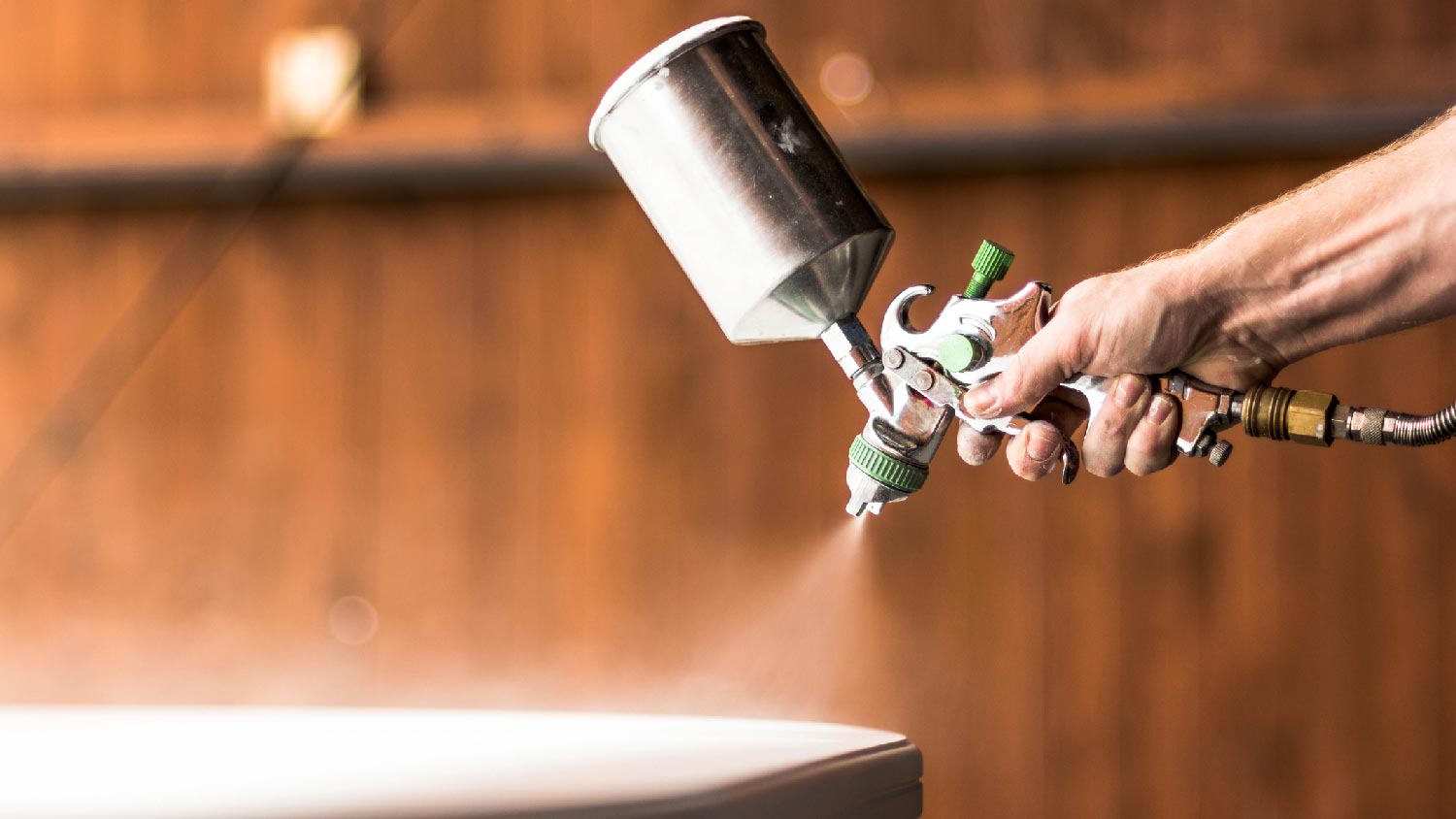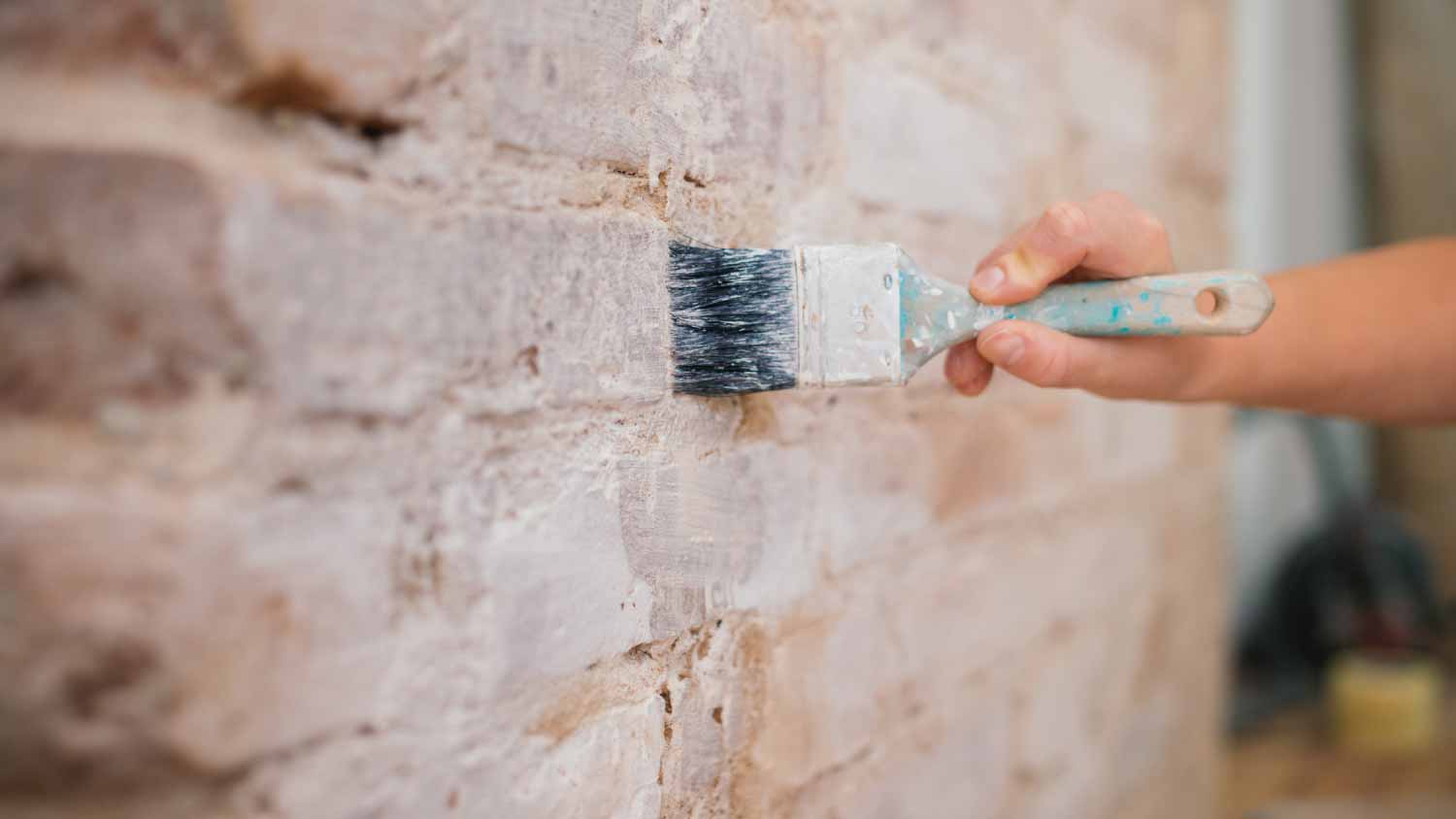
The cost to paint the interior of a house in Baltimore, MD depends on size, layout, type of surface, and more. Learn what factors can influence your total in this guide.
Protect your paint with lacquer for a durable, long-lasting finish


Lacquer is a protective finish applied to paint, wood, or metal.
Many paints do not need a topcoat, but lacquer increases durability and makes your finish last for years.
There are many different types of lacquer, including acrylic, water-based, and catalyzed, each with distinct benefits.
There’s no point in painting something if the color will immediately flake away, peel off, or fade. That’s where protective coatings like polyurethane, shellac, and lacquer come in. Paint lacquer is a topcoat option that can help protect your hard work from damage. It comes in a variety of formulations and offers many benefits over using paint alone.
Lacquer is a clear finish that can be applied to latex and acrylic paint to create a protective layer over the color. It is chip-resistant, waterproof, and breathable, making it a good choice for surfaces needing a durable finish. It comes in different sheen levels, ranging from matte to high gloss, and works on wood, metal, or painted surfaces. Though lacquer can become dull with wear and tear, polishing can easily restore its luster.
Because it is very thin, lacquer is often applied using a sprayer, which helps to ensure a smooth, even finish, though you can also apply it with a brush or roller. The fact that paint lacquer is so thin means you will need more than one layer, but once you apply enough to get your desired finish—anywhere from two to nine coats—the lacquer will protect your surfaces for years. It is even flexible enough to accommodate the expansion and contraction of wood without developing cracks or other issues.
Many people confuse lacquer with paints, but most modern paints do not require a topcoat because they contain enamel that reduces the risk of fading, chipping, or peeling. Because enamel adds a sheen to the paint, flat and matte paints are less durable than shinier paints, meaning they could still benefit from a lacquer topcoat.

Lacquer comes in different formulations, each with its own benefits.
The most commonly used type of lacquer, nitrocellulose, is made from plant fibers treated with nitric acid. Nitrocellulose is frequently used to seal musical instruments and wood products; however, it is highly toxic and flammable and should only be used by professionals. Aside from its risks, nitrocellulose lacquer is also a poor choice for light-colored projects as it yellows as it ages.
Here’s one you can use at home. Acrylic lacquer is a synthetic compound preferable to nitrocellulose for light-colored wood and paint because it is non-yellowing. As an added benefit, this variety dries very quickly.
Water-based lacquers are quickly gaining popularity among homeowners and professionals. They are safer to work with and less environmentally hazardous because they have fewer toxic chemicals. These lacquers are still durable and scratch-resistant, making them a good option for kitchen cabinets and furniture. Note that water-based lacquers are not suitable for exterior use.
This lacquer comes from a two-part system, which you must mix before use. The resulting chemical reaction creates a highly durable finish, but you have to use it quickly or it’ll be less effective. Sometimes, you can buy catalyzed lacquer premixed by the store or manufacturer. While pre-catalyzed lacquer is easier to deal with, it has a shorter life span.
When using a lacquer, always use caution. These substances are flammable, highly volatile, and can present many dangers to the user. Their fumes can cause headaches, dizziness, breathing problems, and even death. Touching lacquers can result in itching, redness, and blisters on the skin. Always use lacquers in a well-ventilated area while wearing proper safety gear, including long sleeves, gloves, safety goggles, and respirators. Better yet, contact a local interior painter to help you with lacquer projects.
Lacquer is far from the only option for sealing paint.
Polyurethane is the most popular topcoat applied over paint. It comes in water- and oil-based formulations. It is safer to work with and more durable than lacquer, but less flexible and slower to dry.
Shellac is a non-toxic, high-gloss finish made from beetle secretions. It is less durable than lacquer but far more environmentally friendly and safer to work with. Shellac can be repaired easily, but scratches easily and does not protect against heat and water damage.
From average costs to expert advice, get all the answers you need to get your job done.

The cost to paint the interior of a house in Baltimore, MD depends on size, layout, type of surface, and more. Learn what factors can influence your total in this guide.

The price of mortar-washing a brick exterior varies widely from single-storey bungalows to large family homes. Learn the average cost to German schmear a house.

The cost to paint the interior of a house in Columbus, OH depends on size, layout, type of surface, and more. Learn what factors can influence your total in this guide.

There are many alternatives to painting brick walls, including staining and whitewashing. Learn more about different methods for bringing new life to your brick space.

A faux wall finish done correctly can transform an entire room. Discover the pros and cons of 15 of the most popular faux painting techniques with Angi.

If your home has windows galore, you’ll want to pick a color scheme that plays to that advantage. Use these paint colors for rooms with lots of natural light.